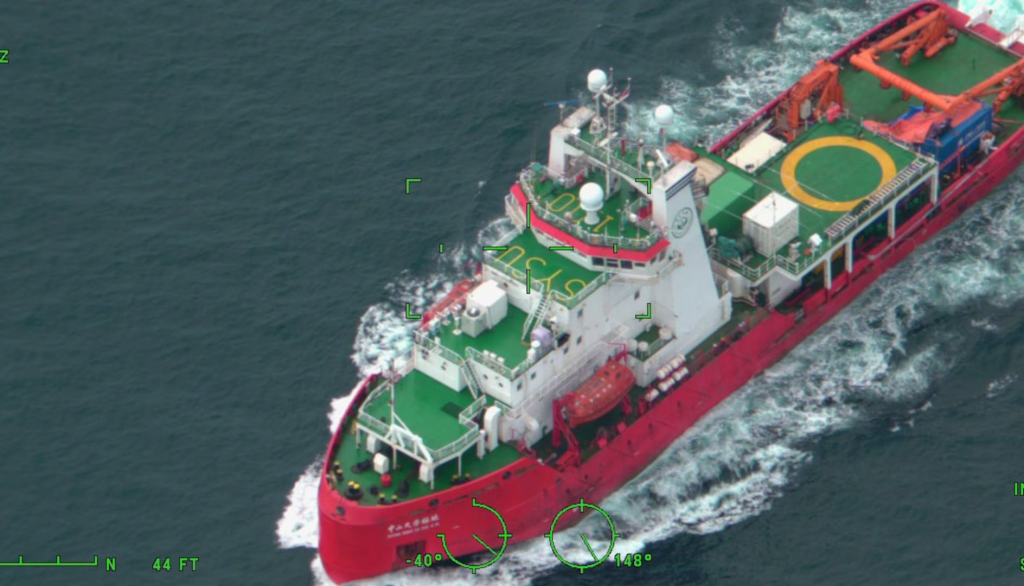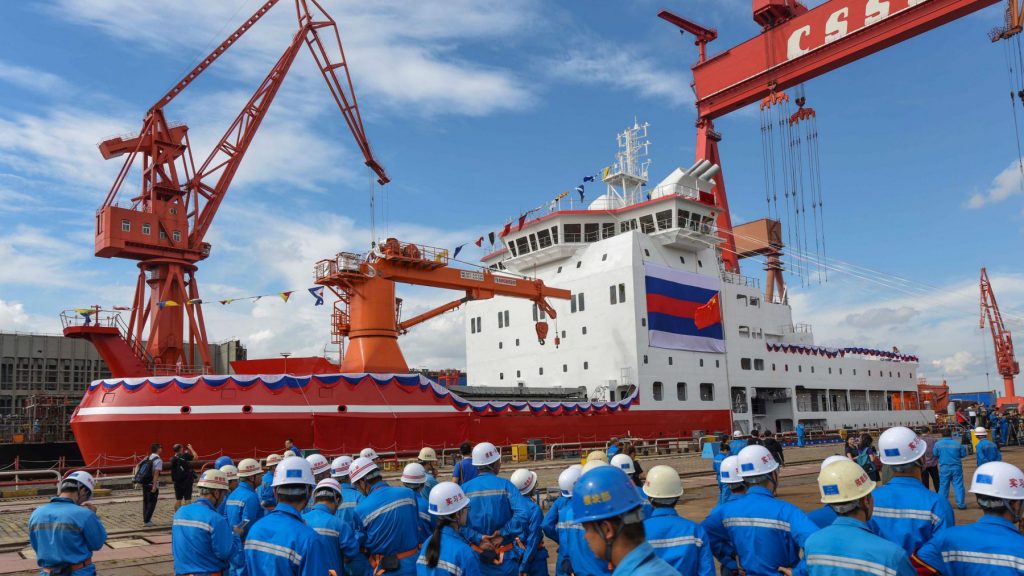U.S. Coast Guard tracking Chinese research vessels in Arctic

Five Chinese research vessels operating in or near U.S. Arctic waters were being tracked last week, part of what the U.S. Coast Guard describes as a multi-year increase of Chinese presence in the region.
“The presence of these vessels is consistent with a three-year trend of increased activity from Chinese research vessels operating in the U.S. Arctic,” the Coast Guard said in a statement on Friday.
“Last year, three Chinese research vessels conducted research operations north of the Bering Strait.”
The agency detailed three of the Beijing-flagged vessels it has tracked in the Arctic this summer:
- July – Xue Long 2, an icebreaker and research vessel, was monitored approximately 290 nautical miles north of Utqiagvik, Alaska, on the U.S. Extended Continental Shelf. The vessel was queried by a C-130J Hercules aircraft from Air Station Kodiak.
- August 5 – Chinese research vessels Ji Di and Zhong Shan Da Xue Ji Di, are detected transiting northeast in the Bering Sea by a C-130J Hercules aircraft from Air Station Kodiak.
- August 6 – U.S. Coast Guard Cutter Waesche (WMSL 751) again monitored the Zhong Shan Da Xue Ji Di, this time in the Chukchi Sea north of the Arctic Circle after it passed through the Bering Strait./li>
The agency didn’t provide details on the other vessels currently being tracked.
Meeting “presence with presence”
The Coast Guard said the Hercules aircraft and the cutter Waesche were on patrol as part of Operation Frontier Sentinel, a mission to keep tabs on foreign activity in and around Alaskan and U.S. Arctic waters.
“The U.S. Coast Guard’s responses are intended to counter malign activities, defend sovereign interests, and promote maritime conduct consistent with international law and norms,” the agency said.
The U.S. Coast Guard has previously flagged an increase in Chinese, and also Russian activity, around Alaska.

The agency said its approach is to “meet presence with presence” — making sure foreign vessels know they are being watched, establishing communications when possible, and then monitoring the ships as they pass through or shadow them until they leave U.S. waters.
The Coast Guard says its Arctic District teams up with U.S. Northern Command, Alaskan Command, and international partners to watch foreign vessels near U.S. waters and the extended continental shelf — part of its mission to protect homeland security and enforce U.S. and international law.
The agency describes itself as America’s only surface presence in the Arctic — a region it calls “a growing zone of strategic global competition.”
Beijing’s northern focus
Since 2013, China has been an observer country on the Arctic Council, and has sought an increasingly active role in the Arctic.
In 2018, it issued a policy document that laid out the country’s plans for massive investments and infrastructure projects in the North, establishing a so-called ‘Polar Silk Road.’

Beijing is also heavily investing in energy projects in the Russian Arctic.
In 2024, Chinese and Russian coast guard ships sailed together through the Bering Sea, which separates Russia and Alaska. They stayed eight kilometres inside the Russian exclusive economic zone.
Feedback, story ideas or tips? Contact Eilís at eilis.quinn(at)cbc.ca
Related stories from around the North:
Canada: Lithium company exploring N.W.T. hopes to refine material in Canada, not China, CBC News
Norway: China asked to remove stone lions from Arctic research station in Svalbard, The Independent Barents Observer
Russia: Significant progress in China-Russia talks on Arctic shipping, says Kremlin, The Independent Barents Observer
Sweden: Sweden asks China to cooperate on Baltic Sea cable investigation, Reuters
United States: China’s Arctic involvement ‘highly exaggerated,’ Harvard researchers say, The Canadian Press



